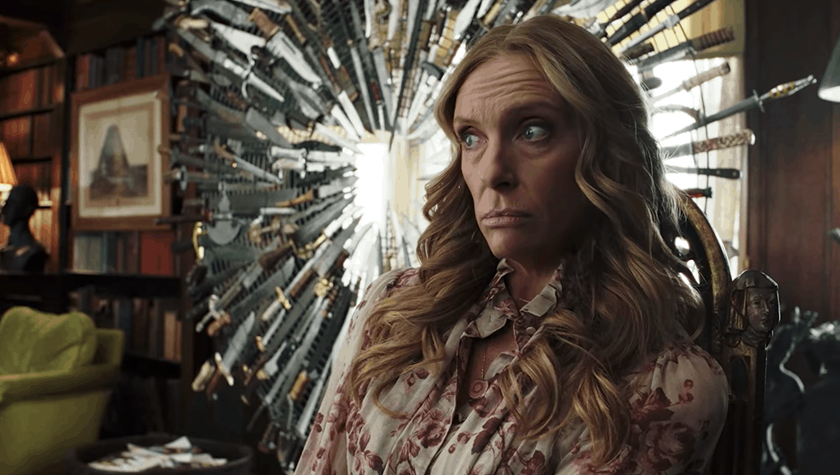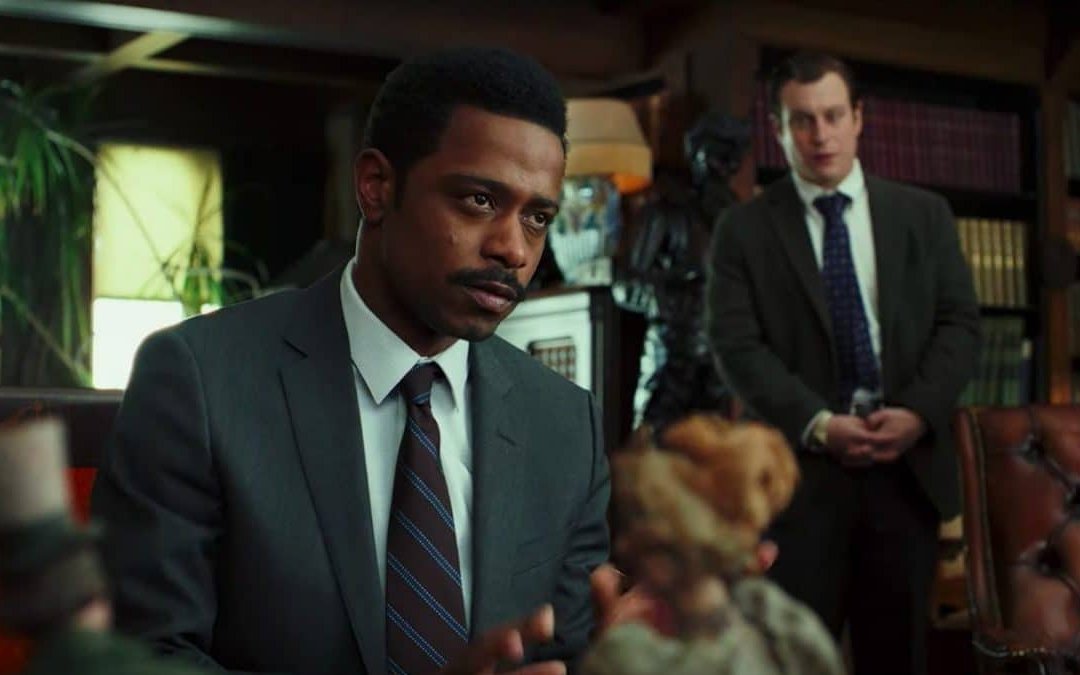Take 5: ‘Glass Onion’ unravels another murder mystery
December 5, 2022
There is no such thing as a straight-forward ‘who dun it’ story. The point is to keep the audience guessing while dropping clues and sending the narrative on any number of constant twists and turns. In his latest film Glass Onion: A Knives Out Mystery, writer/director Rian Johnson sends the audience on another journey of murder and motive as returning character and southern charmer Benoit Blanc (Daniel Craig) is faced with solving a complex crime.
Here are five screenwriting lessons you can takeaway from Glass Onion: A Knives Out Mystery.
- Creating a Common Connection
At the beginning of Glass Onion, the main characters are situated in their own lifestyles amid the COVID-19 lockdowns. Lionel (Leslie Odom Jr.) is in his lab, Claire (Kathryn Hahn) is a politician about to go live on TV, Duke (Dave Bautista) is making internet videos at his mom’s house and Birdie (Kate Hudson) is throwing a party. They all receive a mysterious box at the same time and try to figure out on a group call how to open it.
All of these characters are leading different lives and all are connected through one person: Miles. At this point in the story, it doesn’t matter how they all know each, it’s set up in a way that they do and the viewer must accept this. What matters is we learn who these people are. Johnson introduces us to most of the main characters in minutes showcasing their lifestyles and personalities.
And before the audience even knows anything about Miles, we know of his importance amongst the group and that he’s rich.
You can observe how the characters introduced through several means: the way they talk to one another, where they live/work, what they do for a living and even how they are acting amid the COVID-19 suggestions of social distancing, lockdowns and other protocols.
- The All-Knowing Detective
People love really smart and capable characters regardless of their being a villain or a hero. Think about characters like Sherlock Holmes, Bruce Wayne or Richard Kimble from The Fugitive who all fight for justice and solve crimes. But don’t leave out the villains like Hannibal Lecter and even Lex Luthor who can easily be classified as evil geniuses. Villain or hero people love these smart characters.
Benoit Blanc in Glass Onion is highly intelligent with a keen sense of noticing the finer details those around him, including the audience, miss. Part of his charm is how he can explain these clues to us and help put the puzzle together.
It’s easy to think that having a smart protagonist can offset the struggles you’re supposed to put them through — if they’re so smart, why are they having the problems in the first place? But the challenges you throw their way allows them to use their intelligence to overcome whatever they face or even have it used against them.
- Keep the Surprises Coming
In a ‘Who dun it’ you must consistently, and legitimately, surprise the audience. In Glass Onion, it’s a consistent onslaught of information and surprises. The surprises are everything from the murder victim being someone you least suspect to a subtle line that throws a belief about a character into the opposite direction.
This is a subtle art though because you don’t want to have a surprise for the sake of having one or because 10 minutes have elapsed and you think it’s time. There has to be a reason and it must drive the story forward. It’s worth exploring this through who the characters are and their underlying motives. You can then reverse engineer the surprise.
If you know Character A is going to die, work backwards to plant ideas, red herrings and motives until the death. Glass Onion puts these in place all throughout so the murder is both a surprise and causes the audience to think about the possible clues to figure out who did it. There is almost no piece of dialogue or action that doesn’t have specific meaning.
- Same Character, Different Movie
Glass Onion stars Daniel Craig as the brilliant detective Benoit Blanc made famous in the film Knives Out. Who he is at the beginning of the film is almost exactly who he is at the end. He doesn’t necessarily learn any lessons or go through any major changes throughout the two hours the audience watches him.
Blanc doesn’t have an arc, but the other characters do. This brings up an interesting aspect when you’re writing a story – your protagonist can drive those around them to transform without themselves changing very much. Think about Forrest Gump or Ferris Bueller’s Day Off. Neither one of these characters shift who they are throughout the film but it’s who they are at their core that helps change those around him. The same is true in Glass Onion. Blanc has a profound affect in changing those around him, just like he did in the first Knives Out.
- A Fun Murder
What’s really the difference between Se7en and Glass Onion? Both involve murder, detectives solving a mystery, suspense and surprise twists and turns.
Part of writing a murder mystery will involve figuring how dark light or dark you want it. Glass Onion is a light-hearted murder mystery. The characters are fun, the colors are vibrant and the storytelling indicates a cheerful atmosphere. Se7en is the opposite.
The tone of your story is important as it will drive who the characters are, how they react to situations, the setting and considers the audience’s expectations. Glass Onion is fun because it’s designed that way. The murders aren’t gruesome and the enjoyment is in following these eclectic group of characters around a remote island as each are suspects in a murder.
Glass Onion: A Knives Out Story will premiere on Netflix on December 23, 2022.
Written by: Steven Hartman
Steven Hartman is an award-winning, optioned screenwriter. He was a Top 5 Finalist in Big Break’s Historical Category in 2019 and won Best Action/Adventure in Script Summit’s Screenplay Competition in 2021. He holds a Bachelor of Arts degree from Columbia College and had internships at Jerry Bruckheimer Films and Village Roadshow Pictures. Steve is a full-time writer and creative video producer by day and a screenwriter and novelist by night.- Topics:
- Screenwriting & Craft




